Physics
Fox
Summary
- A pinhole camera (aka. a 'camera obscura') is a box with a small hole in the side. Light goes through this hole to form a sharp image on the inside of the box. The image is inverted — aka. the image is upside-down and flipped left-to-right.
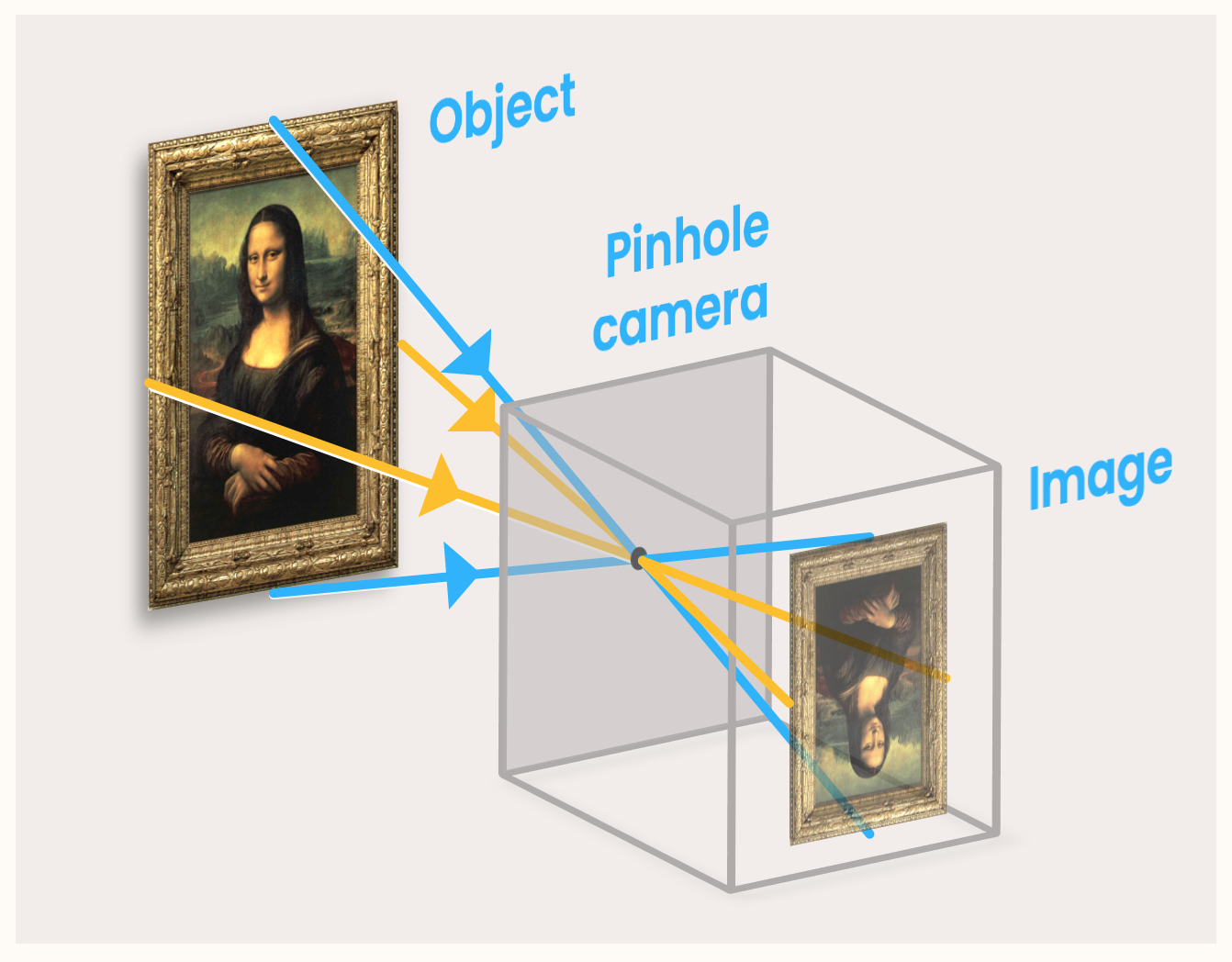
- The closer the camera is an object, the larger the image of the object is. If the hole is made bigger, the image becomes blurry.
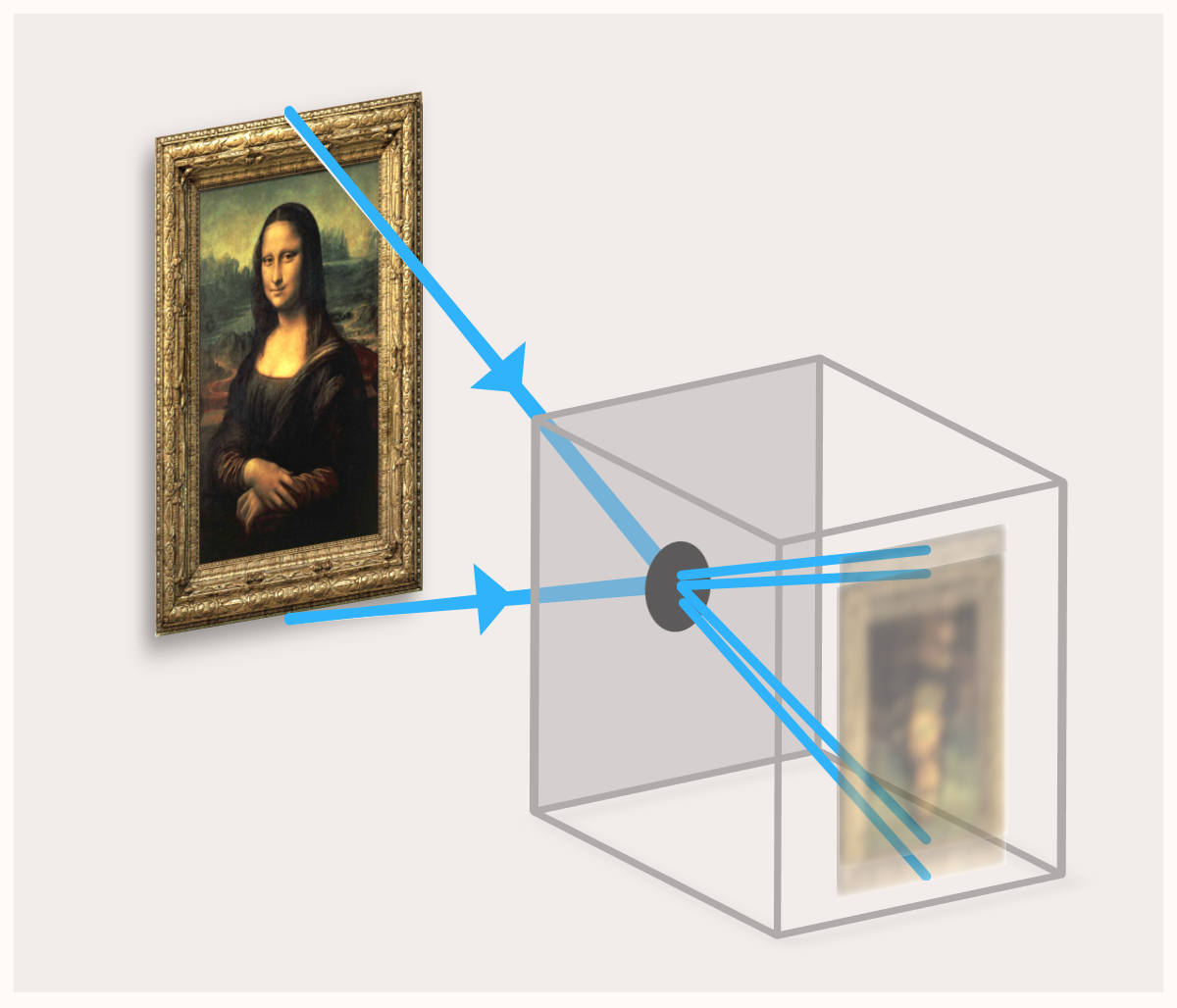
- Analogue and digital cameras have much larger holes (apertures) than pinhole cameras. To stop the image becoming blurry, a lens is used to focus the light.
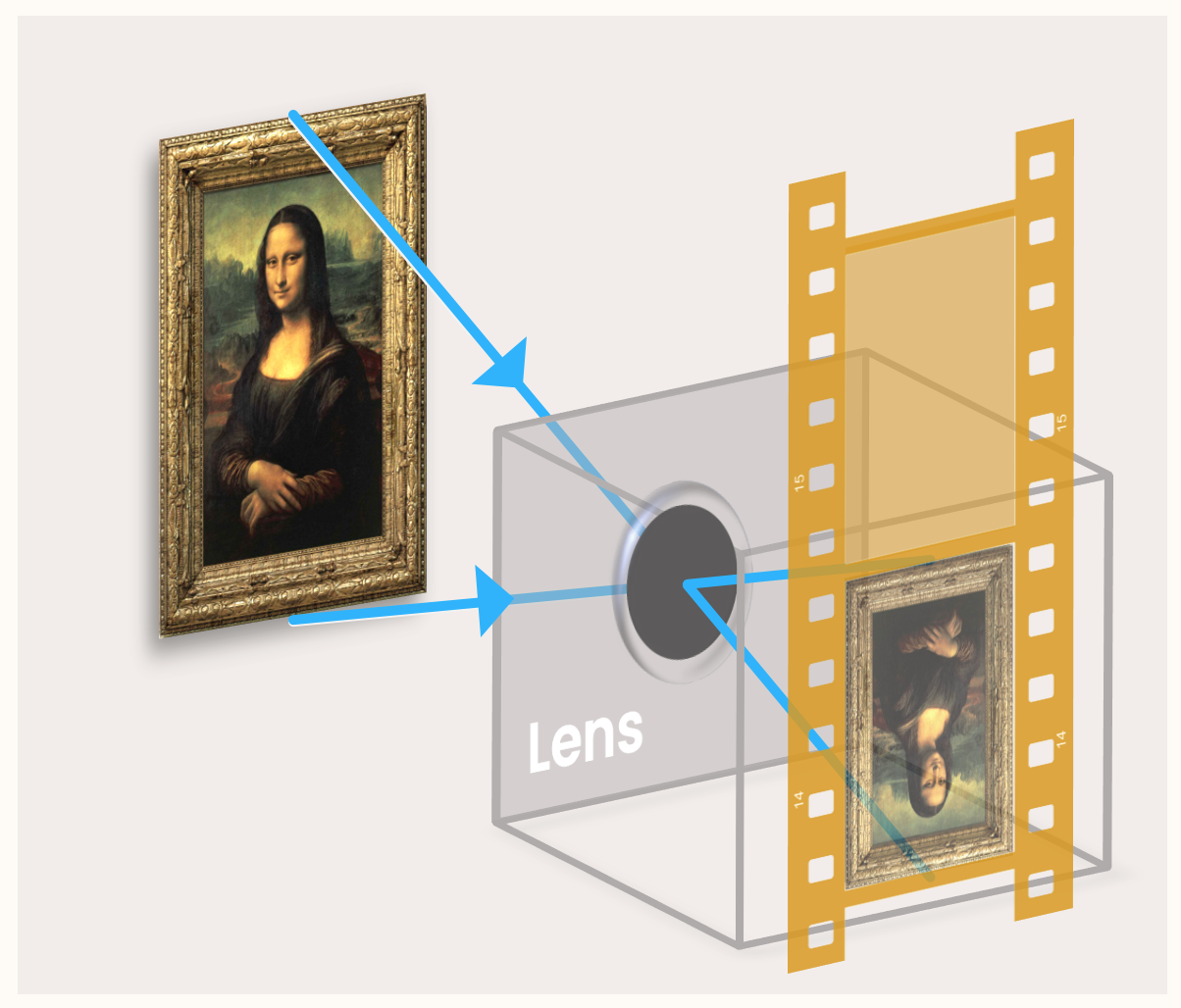
Me not working hard?
Yeah right, picture that with a Kodak
Or better yet, go to Times Square
Take a picture of me with a Kodak
We now know how light travels through space, and how it reflects off objects. There's one final step; how do our eyes detect this light?
This is best understood by first knowing about how cameras work, and then moving onto eyes. We'll start with the simplest kind of camera: the pinhole camera.
Here's how to make a pinhole camera: Make a box, then poke a tiny hole in it with a pin. That's it.
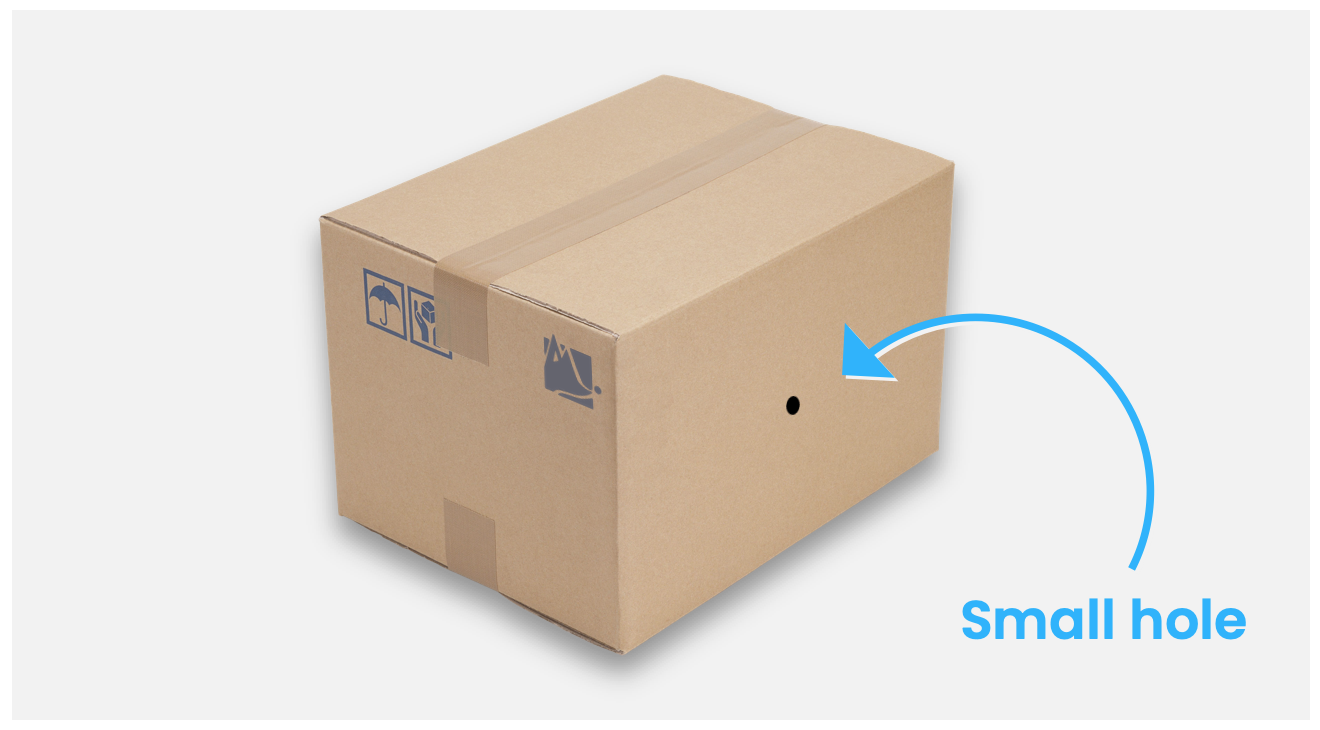
On the inside of the box there's a real-time image of the outside world, but it's inverted! What's going on?
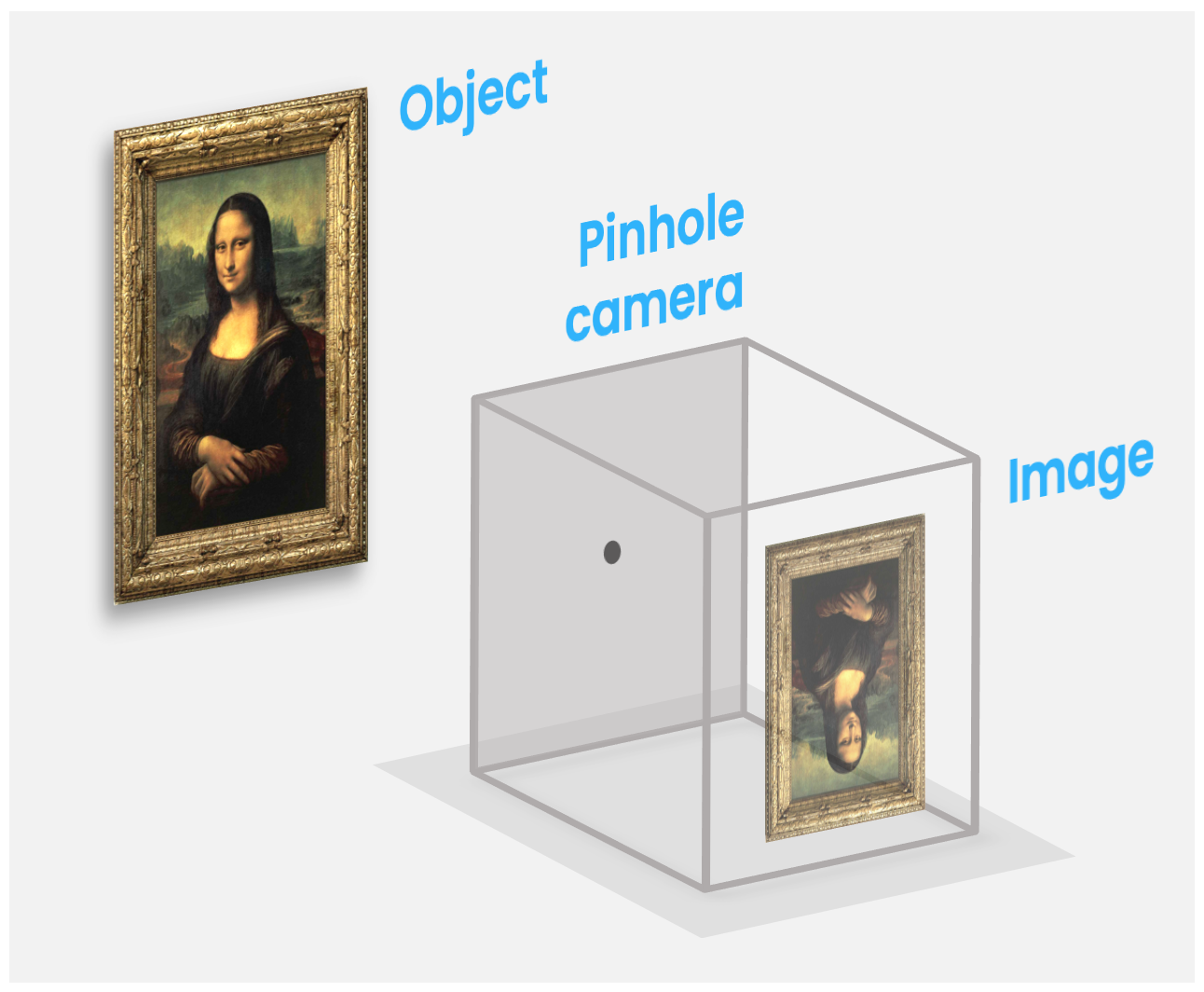
Let's look at what happens to light from top and bottom of an object outside the box. Both rays travel through the small hole. The light rays travel in a straight line through the hole, and continue to the wall. The ray from the top of the object goes to the bottom of the wall, and the ray from the bottom of the object goes to the top of the wall. Therefore the image we see is the object flipped top-to-bottom.
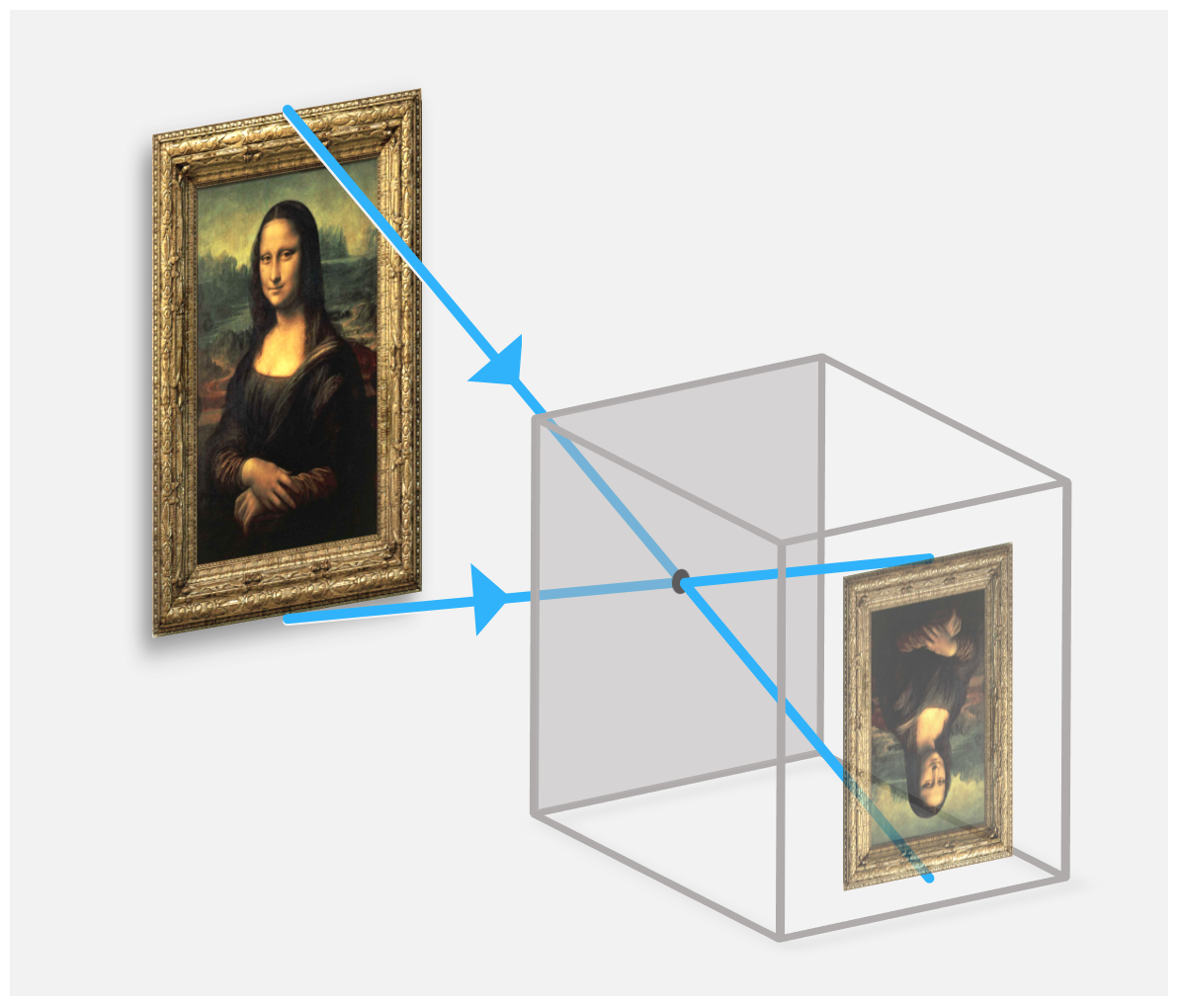
Similarly, light rays from the right of the object must go to the left of the wall, and light rays rays from the left of the object must to the right of the wall. Therefore the image is flipped left-to-right as well as top-to-bottom. The combination of these two is that the image is inverted.
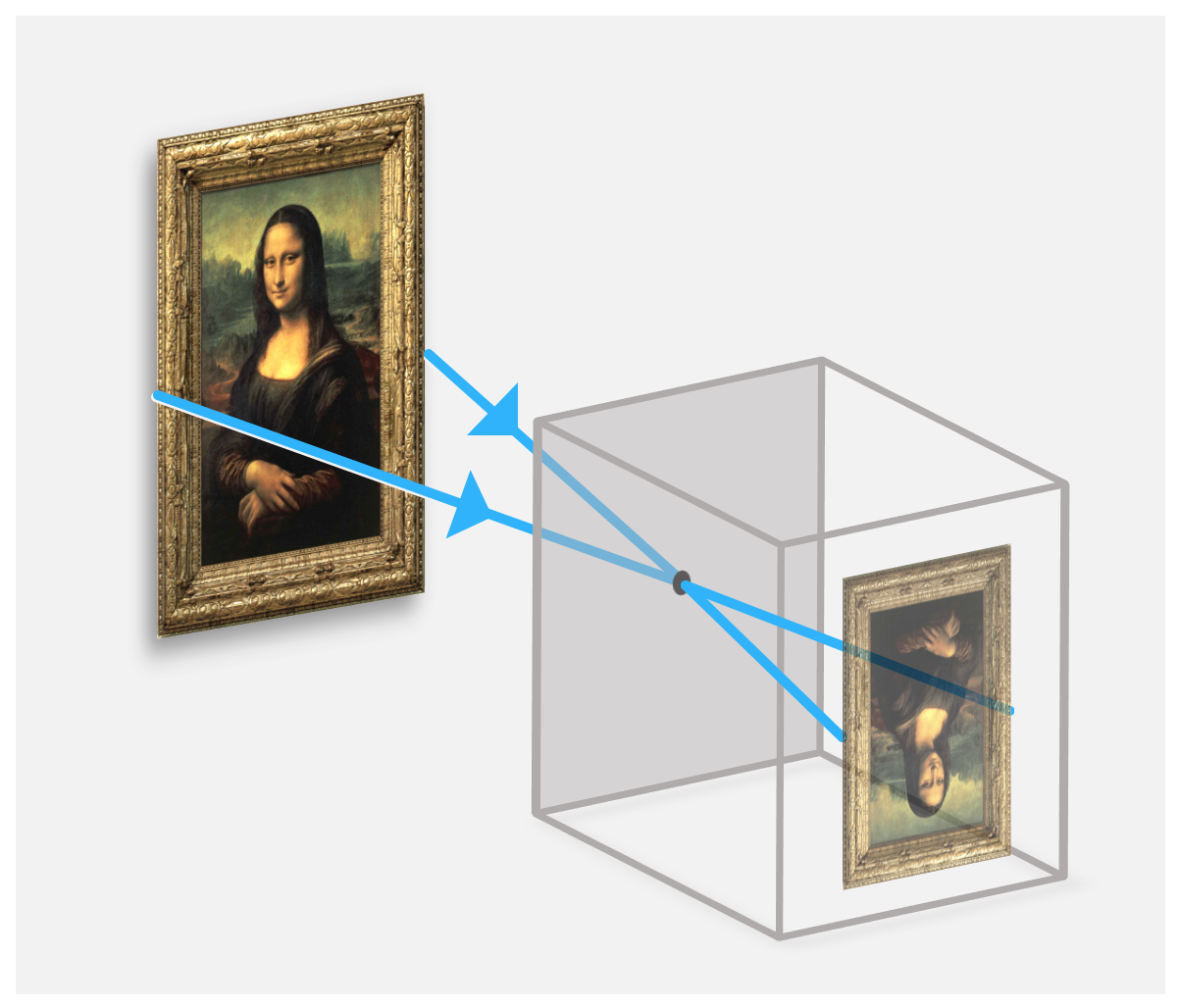
With this diagram we can also see that the further the camera is to the object, the smaller its image will be (and vice versa).
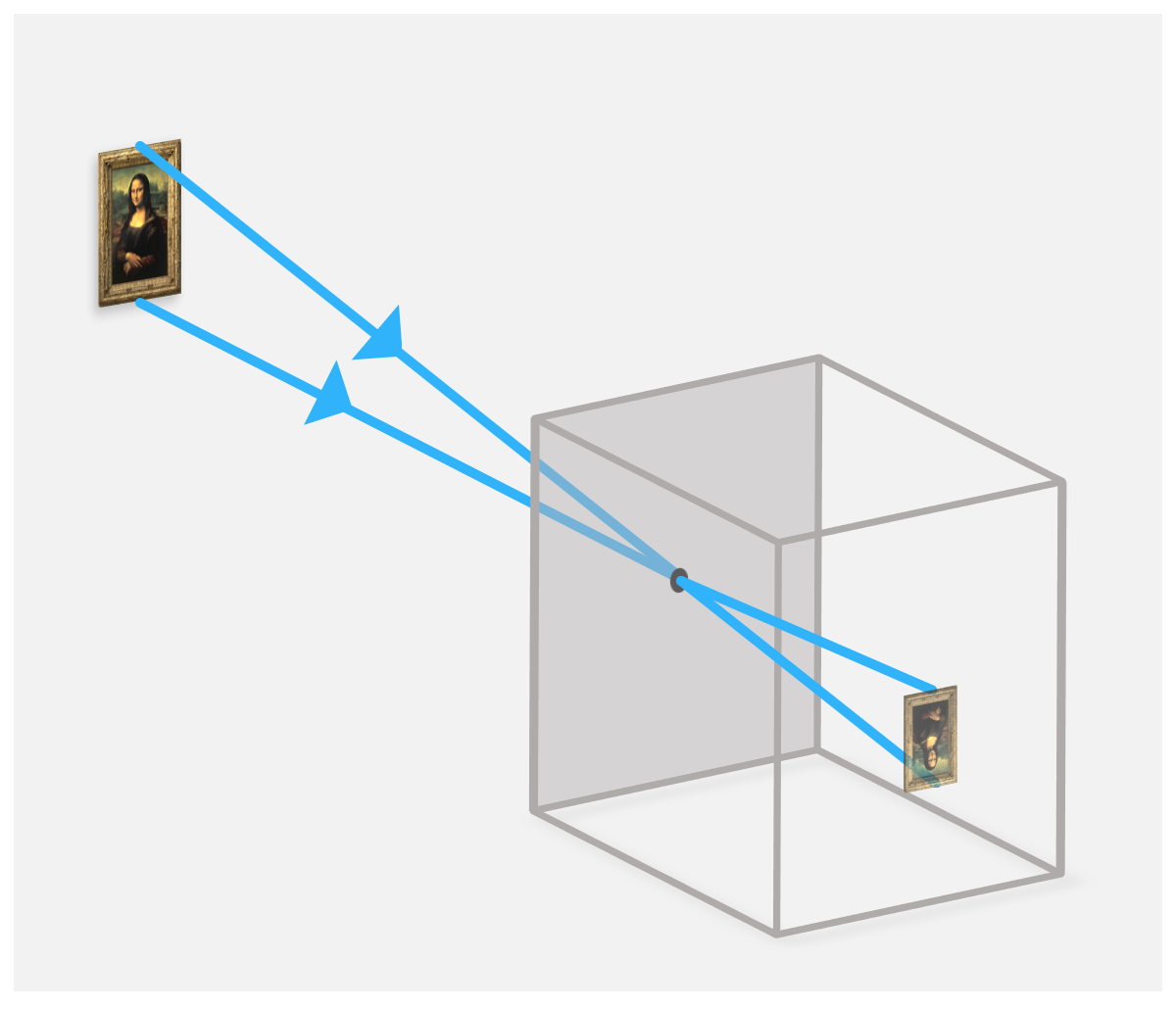
Note that if you're making one of these boxes yourself, you'll want to make the back wall out of translucent paper — otherwise there's no way for you to actually see the image!
Well... there is actually one way to see inside the box without changing the back wall. This is done by making the camera the size of a room, and going inside it! This has been known for hundreds of years; here's a drawing from 1645 of a room-sized pinhole camera:
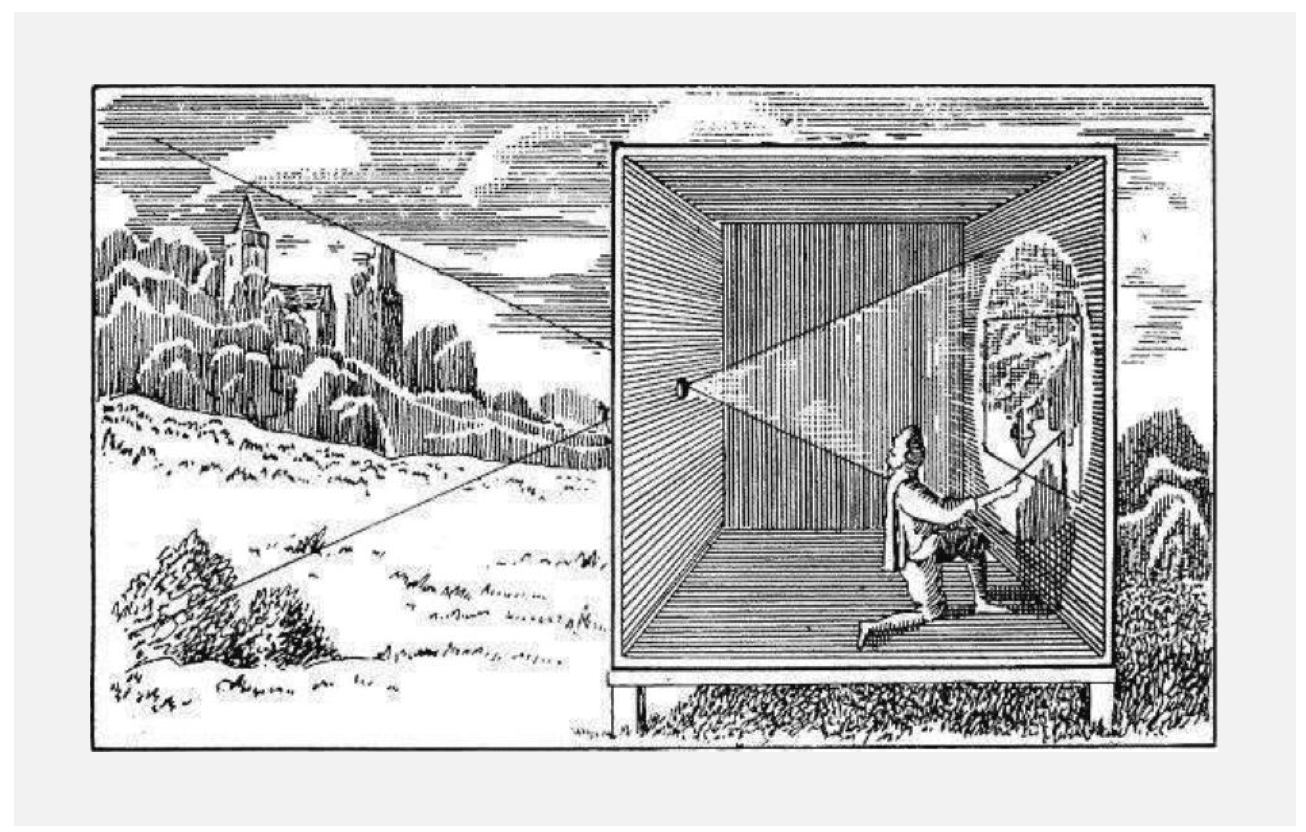
These rooms are actually where the the word camera comes from — ‘camera’ is the latin word for room. (The full term is ‘camera obscura’, meaning dark room.)
A pinhole camera isn't enough, is it? You can't exactly take your holiday pics with it, as there's no way to keep the images!
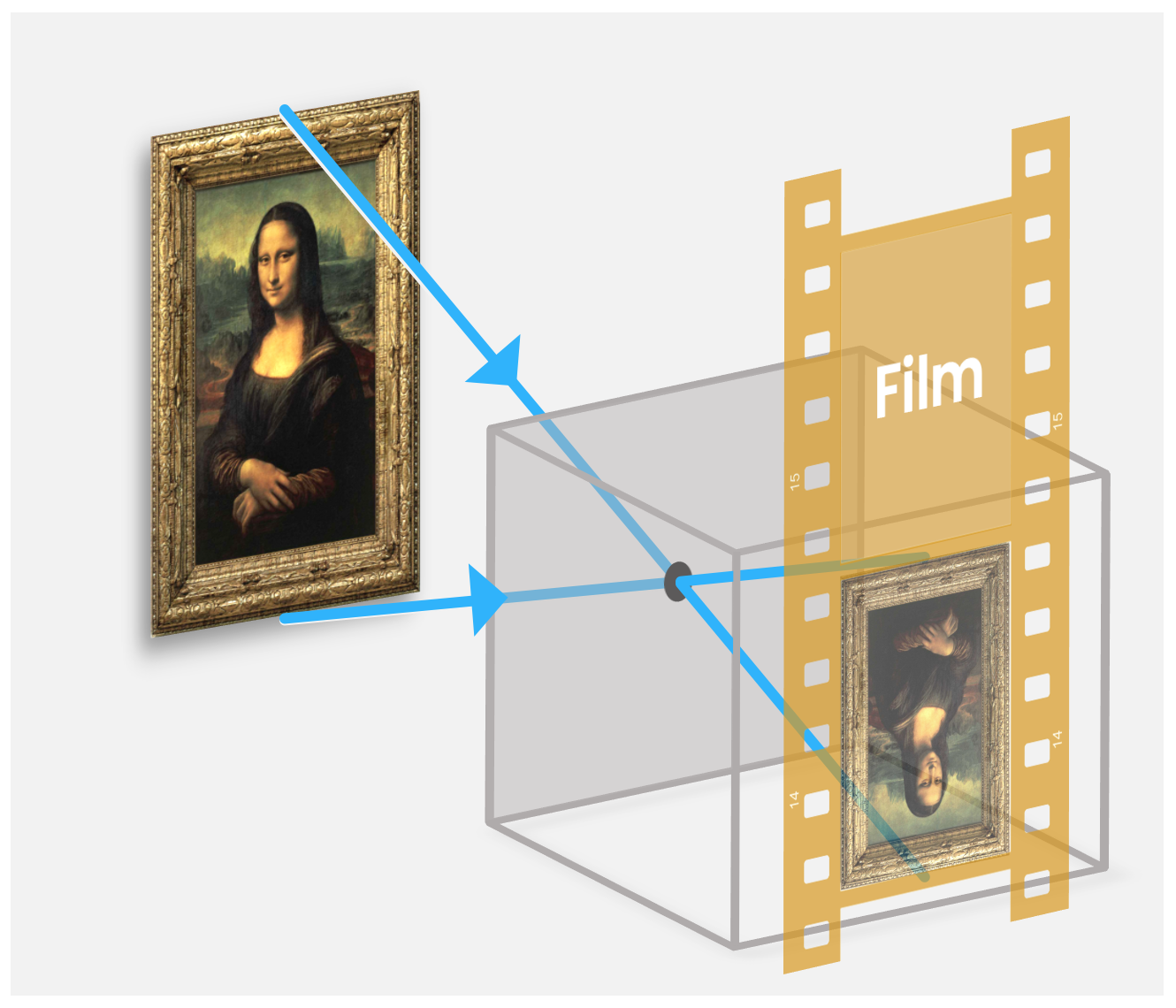
We need to put something on the back wall that keeps the image. For this, we use film. Film is a thin strip of plastic with a special chemical layer on top. This chemical layer reacts with light; the more light hitting some area of it, the darker this area gets. (NB: This means that bright objects look dark on film, and dark objects look bright. This is why the images on film are called 'negatives' - The actual (non-negative) image needs to be developed later).
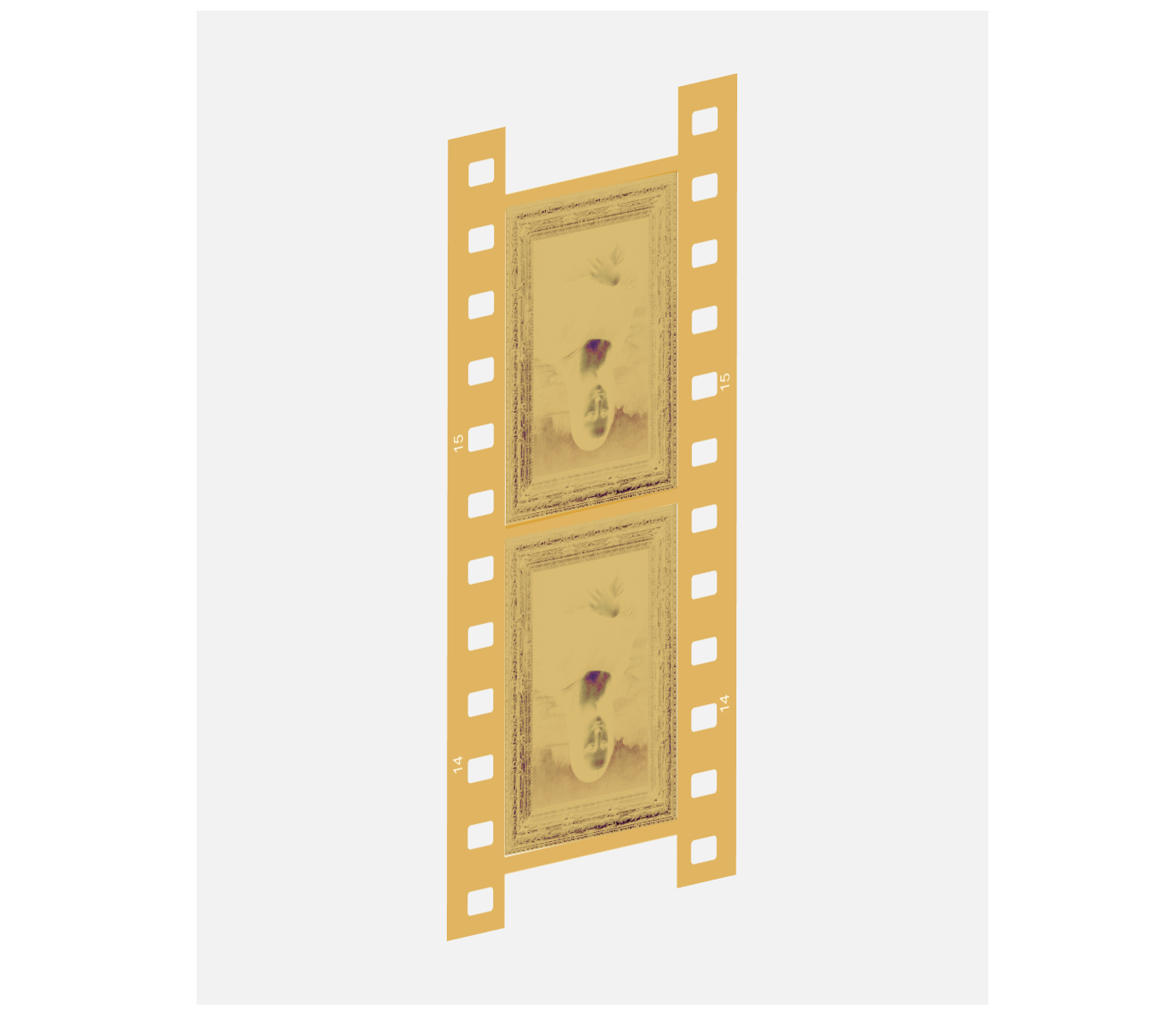
Here's the oldest surviving photograph, View from the Window at Le Gras from 1825:
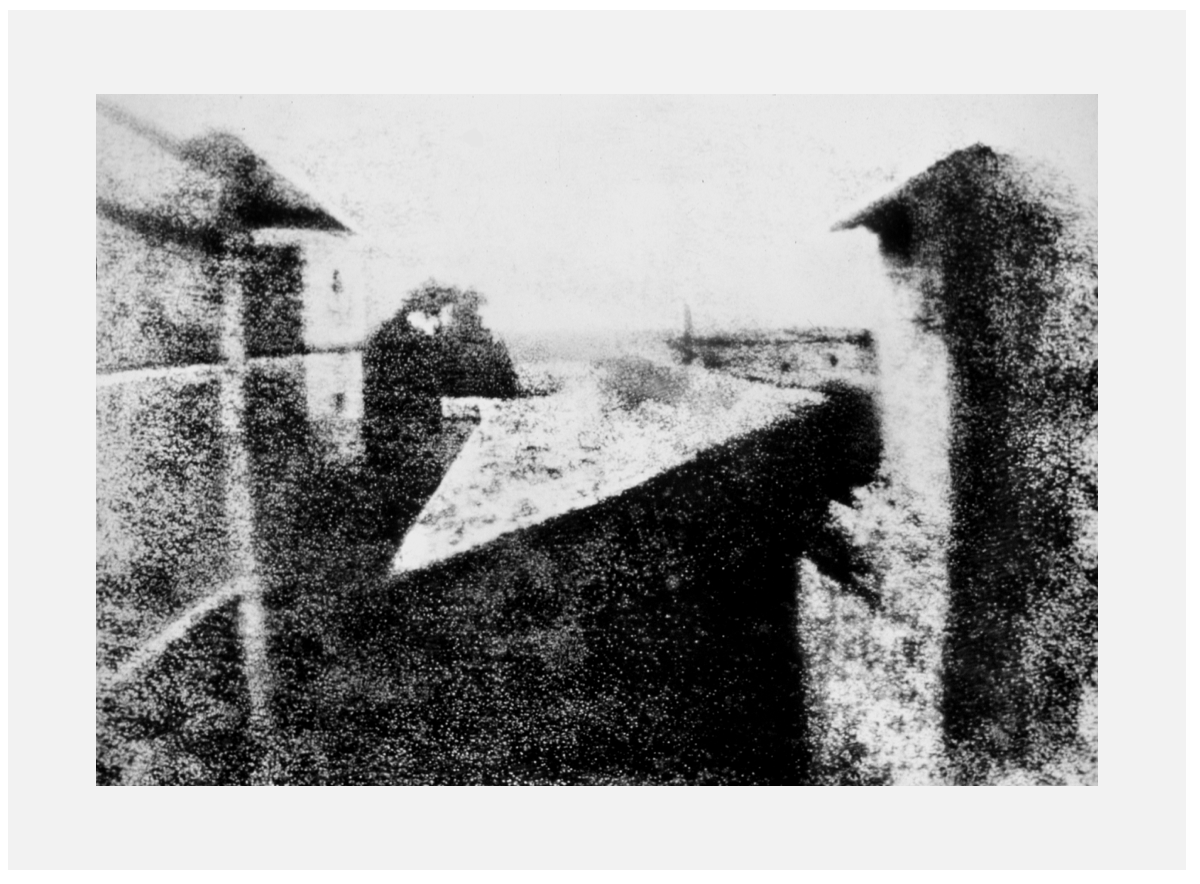
Admittedly it's not much of a view, but it worked! There's still one problem with the camera though — most photos taken with it are way too dim. This is because the pinhole is so small that not much light actually gets through it.
One solution is to spend ages taking the picture; exposing the film to light for a long time. The photo above took 8 hours for all the light to come in (i.e. the exposure time was 8 hours). This obviously isn't practical. We need a way to get light in quicker.
We could make the hole bigger, but this makes the image very blurry. This is because the light from one part of an object hits the film in multiple places:
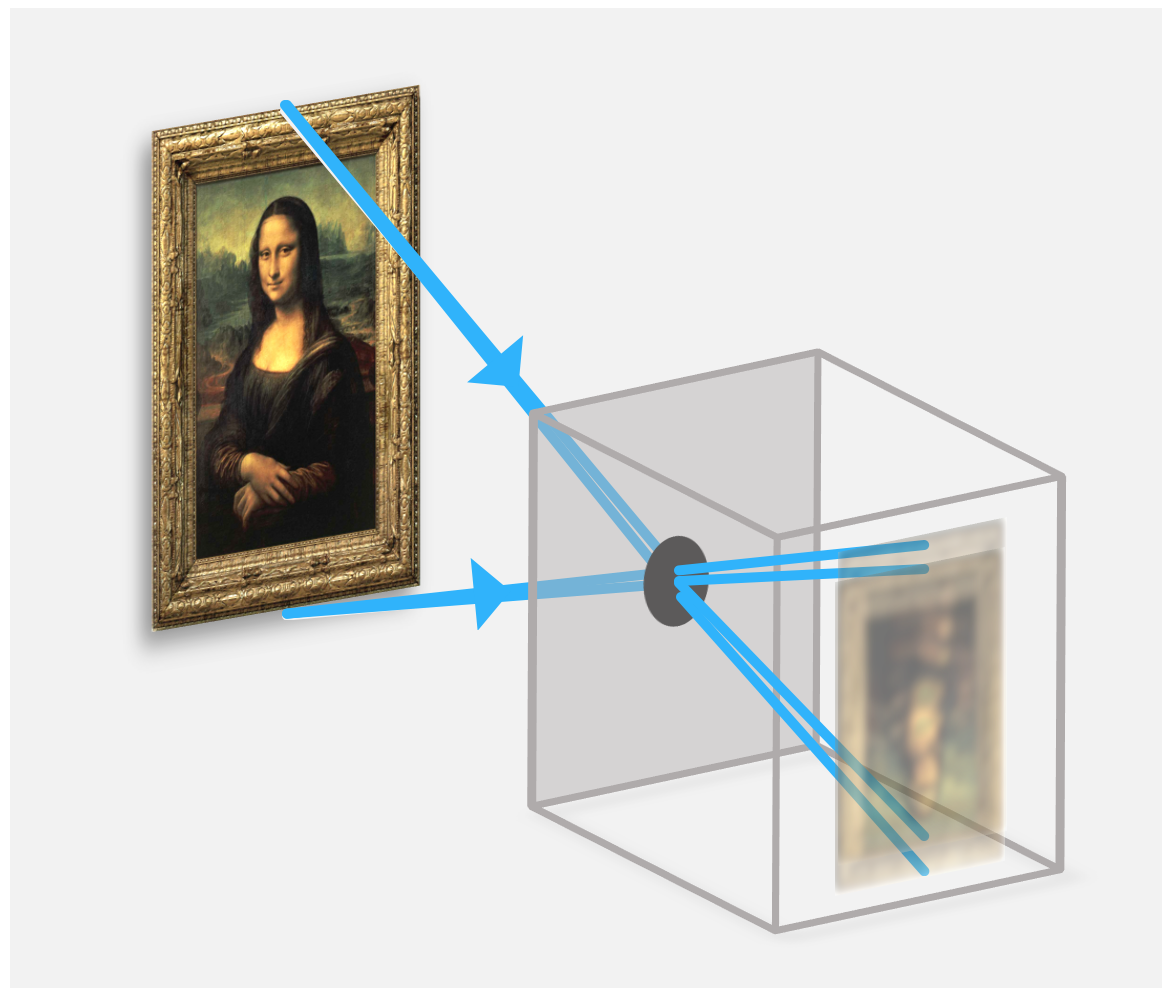
To stop the light from spreading out, we put a (convex) lens just behind the hole. Lenses focus light, making the large hole act as if it's a pinhole. This makes the image a lot sharper. (How do lenses focus light? We'll explain that another time.)
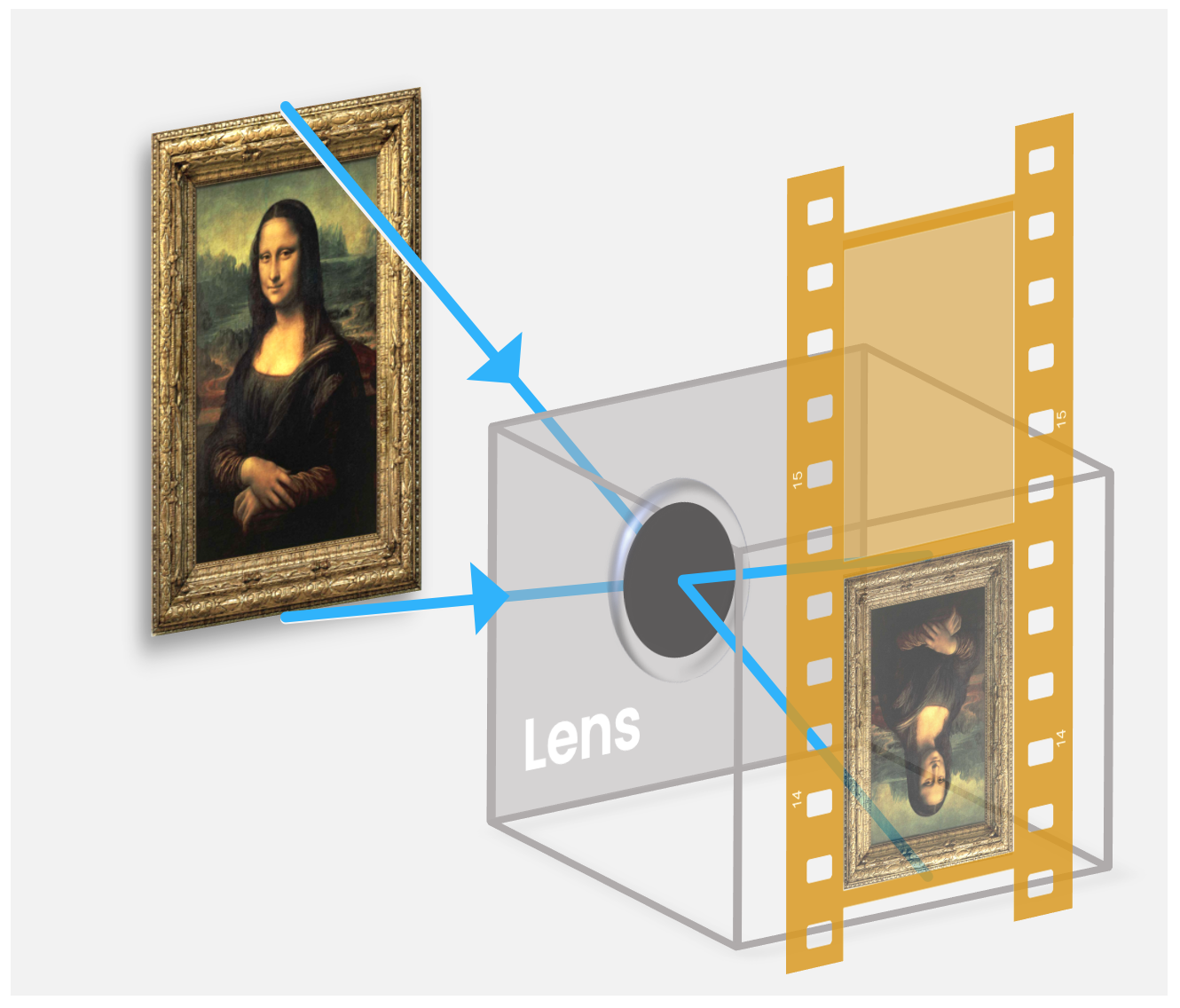
Another way to let more light in is to create a burst of light when you take the picture. This is why cameras have a flash!
To take the best possible photo, photographers have to take the hole size (aka. aperture size), the exposure time, and the distance between the lens and the film (aka. focal length) into account.

Digital cameras (like those found in phones) basically work in the same way as analogue cameras, except instead of film you have an image sensor. Image sensors are electrical chips with millions of tiny squares called pixels. Each pixel can detect how much light has hit it, so the more pixels you have the better the image resolution is. (A million pixels is called a megapixel).
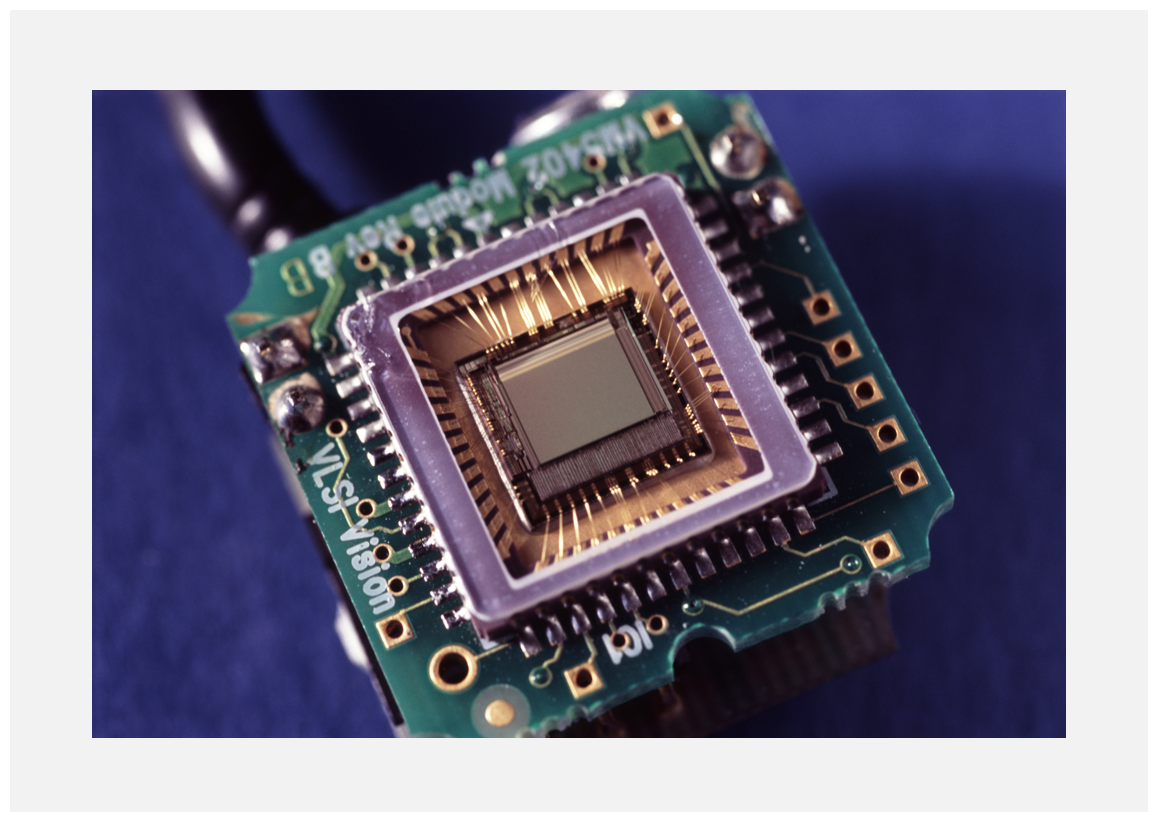
Congratulations!
5 of 5 questions completed
+ ⭐️ collected.
Sign up (for free!) to:
• save your progress 📊
• create constellations✨
• customise your fox! 🦊







